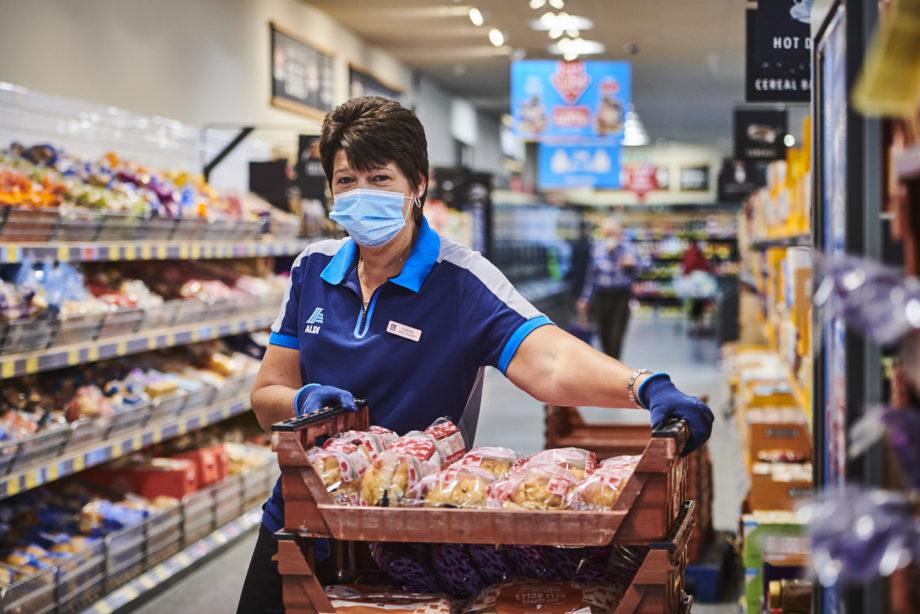With the worldwide staple retail market worth an incredible $5.9 trillion, it’s not really shocking that the tech goliaths of this world have rushed to cut their cut of the pie.
Late mechanical developments assist stores with further developing client encounters while likewise expanding deals, smooth out store visits and convey designated advancements.
The supposed advanced insurgency has flipped the universe of retail on its head as general stores search for drawing in ways of building brand faithfulness and get new clients through the entryway.
Go along with us as we examine the best five advances disturbing staple retail and investigate imaginative instances of retailers making ready for the fate of food.
- Limited time Versatile Applications
Gone are the times of clients flicking through store inventories and thick retail brochures to recognize the most recent deals. The versatile transformation has opened new roads for basic food item retailers to fabricate brand faithfulness through coupon applications like SnipSnap and Flipp.
Clients appreciate restrictive limits on chosen brands as retailers just barely get costs to get clients through their entryways and support rehash visits.
Progressively, clients are attempting new stores and resisting the pattern as they try different things with elective items which they wouldn’t generally purchase. A new report saw as 84% of customers say coupons impact their decision of general store, and 86% said coupons can urge them to attempt new items.
Essentially, portable applications that assist customers with arranging suppers and sort out their week after week shops are setting out limited time open doors, before clients have even ventured through the entryway.
Staple level of intelligence and ListEase are making shopping for food more straightforward than at any other time by making nitty gritty records and item proposals in view of a clients’ previous buys.
Versatile applications likewise give marks an additional a touchpoint to put explicit items right in front of customer and use reliability information to make customized customer experience. A few stores, like Wegmans in the US, have fostered their own versatile application to offer custom tailored coupons and customized advancements to assemble brand dedication.
Research recommends 63% of clients are glad to download a retailer’s unwaveringness application as a trade-off for advancements and limits.
Incorporating Installment Wallets into Versatile Applications
A few retailers, like Walmart in the US and Coles in Australia, are starting to incorporate installment wallets into their versatile applications. Clients benefit from the comfort of having their staple financial plan in one spot, while retailers can gather important information and watch client spending.
A new report assesses that the versatile installments market is valued at $870 million, and is relied upon to move to the elevated statures of $27.7 billion throughout the following six years.
The capacity to offer store credit advancements and track client spending offers retailers a chance to fortify brand dedication and urge clients to return for additional. All things considered, assuming a client has cash into their advanced wallet, they’re probably not going to allow it to accumulate dust.
- Blockchain in Basic food item Retail
Despite the fact that Blockchain was initially intended to help cryptographic money, this exceptional innovation holds energizing open doors for staple retailers.
Regardless of whether it’s lessening food squander, smoothing out supply chains, or working on quality control, Blockchain could help retailers by making secure and morally sound records of short-lived staple items.
Blockchain additionally assists retailers with selling fresher, more secure, and more reasonable items shoppers can trust. This is the way blockchain can advance a smooth excursion from ranch to-table:
Gather continuous information. Live information assists retailers with upsetting spot production network shortcomings and recognize regions to reduce expenses.
Decrease blunders. Secure blockchain frameworks don’t commit errors like people do.
Track the development of merchandise. Blockchain gives retailers certainty that providers aren’t compromising where they shouldn’t be.
Lessen squander. 45% of the products of the soil crops go to squander every year. Blockchain recognizes where this waste is happening and gives dependable review trails to follow store network shortcomings.
By 2025, specialists anticipate 20% of the world’s top grocery stores will utilize blockchain to diminish squander, check sanitation, and further develop detectability.
Watch this space as blockchain keeps on reforming staple retail.
- Web of Things
Customer experience will arrive at an unheard of level as innovative progressions change the manner in which clients cooperate with items, both coming up and at home.
The Web of Things implants computerized tech and gathers high volumes of information by associating the Web to ordinary items. Accordingly, normal family things like the fridge can gather, send and get information.
Regardless of whether it’s introducing racking units which naturally screen stock, or geolocating clients by means of a portable application, the Web of Things holds intriguing potential for basic food item retailers.
For instance, tech boffins at Mission Information have created TempTag to keep food new and oversee store inventories. Dampness resistant sensors have been introduced in fridges and cooler units across more than 3000 US stores to screen temperature and give head supervisors ongoing item data.
TempTap assists retailers with following sell-by dates, further develop stock administration, and decrease squander by telling senior supervisors when certain items ought to be limited.
In 2016, the Web of Things’ worldwide market size was esteemed at more than $16 billion and is relied upon to develop by 21.5% consistently among now and 2025.
Web of Things at Home
Not exclusively are these tech-filled advancements altering in-store encounters, but on the other hand they’re changing the manner in which individuals shop from home.
Swedish general store, ICA Gruppen, has teamed up with PostNord messengers to foster a savvy answer for unattended snap and gather conveyances. Brilliant entryway locks give dispatches secure admittance to clients’ homes by means of a versatile application when they’re away.
Obviously, Amazon has made things a stride further with their Amazon Run advancement. Rather than flying to the shops to load up on home basics, the advanced customer can essentially click a button from the solace of their home.
Amazon clients place a progression of brilliant buttons around their home, which are separately connected to explicit items through the Web. At the point when a client is coming up short on ketchup, for instance, they can add another jug to their next home conveyance request with a straightforward snap of a button.
ParcelHero claims Amazon Run could win the web based shopping goliath however much a 20% portion of the web-based staple market by 2020.
- In-Store Robots
Regardless of whether it’s really looking at stock, limiting items, or tidying up spills, robots are observing their direction into supermarkets across the world.
Panasonic have collaborated with Japanese food merchant, Lawson, to preliminary a state of the art mechanical look at framework. Rather utilizing staff to output and sack food, retailers can have Reji Robo cover things. The state of the art tech adjusts a computerized shopping crate with a standardized tag peruser to consequently filter things before delicately dropping them into a pre-arranged pack.
Also, Mind Corp has fostered an automated store aide called Marty who is helping workers and clients in north of 500 stores across the Netherlands. Marty utilizes innovative sensors to screen spillages, make staff declarations, and answer client inquiries to further develop generally in-store insight.
While staple retailers are yet to feel the overwhelming power of in-store mechanical technology, the possibility to reduce work expenses and increment productivity has drawn in weighty speculations for man-made reasoning and software engineering.
Juniper Exploration gauges retailers have as of now put more than $3.6 billion in fake innovation – a figure that is relied upon to significantly increase by 2023 as arising advancements keep on reshaping the retail scene.
- Check and Go
In the event that you thought self-administration check-outs were cutting edge, delay until you catch wind of probably the most recent improvements in filter and go advances.
Examine and go eliminates the look at venture between a client placing things in their bin and leaving the store. Portable applications and in-store tech are assisting retailers with accelerating customer encounters to fit with their bustling ways of life and stay away from expensive lines at look at.
As could be, Amazon are disturbing the retail market with their most recent answer for keeping away from slow check-outs.
Amazon Go utilizations a mix of sensors and AI remove the problem from in-store shopping for food. Clients enter the store by opening an entryway with Amazon’s portable application and shrewd tech tracks their developments before consequently charging them through the application.
After effectively testing their “simply leave innovation” in their first Seattle store, Amazon keep on driving the staple business into the following century with eager intends to carry out 3000 stores by 2021 at an expected expense of $3 billion.
A Cross breed Approach
A tech startup in New Zealand has adopted a cross breed strategy to filter and go by joining a versatile application with on-streetcar cameras and QR codes. Their smartcart innovation consequently filters items as they’re added to streetcars and clients essentially pay through the application when they leave the store.
Contrasted with Amazon Go, which includes constructing totally new stores, this cross breed innovation is intended to work in existing stores by making a few generally minor and modest changes.
The Fate of Food
As innovative progressions reconsiders available and internet shopping encounters, staple retailers can jump on an astonishing cluster of chances and difficulties.
Customized advancements, more secure food, decreased waste, more astute general store retires, and smoothed out check-outs are only a portion of the numerous ways innovation is assisting retailers with drawing in new clients and construct brand faithfulness.
Considering this, conventional food merchants



